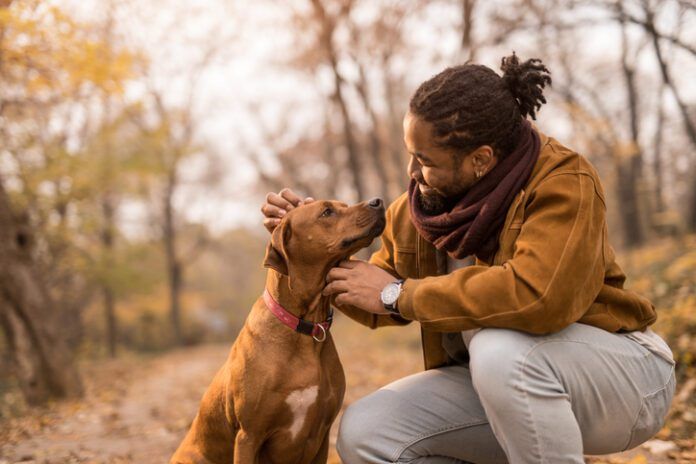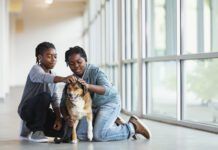Humans tend to naturally want to demonstrate their love with hugs, petting, and cuddles – and some dogs love being hugged, petted, and cuddled, too! But others don’t. The best way to show your dog your love is to pay close attention to what she likes and then provide the kind of touch, eye contact, and interaction that she enjoys best – and to avoid imposing your preferred or unconscious way of petting or play on a dog who signals that she is uninterested or avoidant.
To determine what kind of touch and attention she really loves, try a “consent test”: Sit near your dog. When your dog approaches you, initiate contact. The best first contact is usually a scratch on the chest (not on top of the dog’s head, few dogs like that!). Scratch or pet her for about three seconds, then remove your hand. If your dog moves closer or nudges your hand and has a relaxed facial expression, she is inviting more physical contact.
If you have a lap snuggler, by all means, indulge. If your dog prefers scratches under the chin or a calming massage, do that. If she likes making direct eye contact with you, spend long moments gazing lovingly into her eyes.
Dogs can change their minds, so even if yours invited additional petting at first, be alert for signs that she has had enough and wants the petting to stop. If she moves away, let her go! Think about where and how you were petting her when she decided to move away; she may not like that particular type of contact! (For more detailed information about consent testing, see, “Does Your Dog Opt In? How to Communicate With Your Dog.”)
Loving Alternatives to Touch
Be aware that some dogs would rather not be touched at all! If your dog is one of these, show her that you love her with activities that she enjoys. The more adventures that she enjoys with you the most strongly she will associate you with the pleasure she feels during these activities.
If walks are her favorite activity, commit to regular walks in the woods or “sniffari” adventures, giving her as much time to smell all the smells that she wants. If she prefers rousing games of tug, fetch, or find-the-hidden treat, try to indulge in these games at least once a day, if not more, if only for a few minutes each time.
Don’t forget training! Relaxed, fun, force-free training can make your dog feel connected, understood, and loved by you! It’s communication, after all. Plus, a well-trained dog can enjoy many privileges: visits to homes of friends and family, public outings around other dogs and humans and other animals, and even off-leash hikes and canine sports.
Keep in mind that even if it’s well intentioned, old-fashioned training that uses coercion or the faulty “dominance” concept has been scientifically demonstrated to damage a dog’s well-being and quality of life. A happy voice, warm praise, clear cues (rather than “commands”), and gentle handling will tell your dog you love her. Force-free tools and methods that help build relationships based on mutual trust, respect, consent, and cooperation are a true demonstration of your love for your dog.






